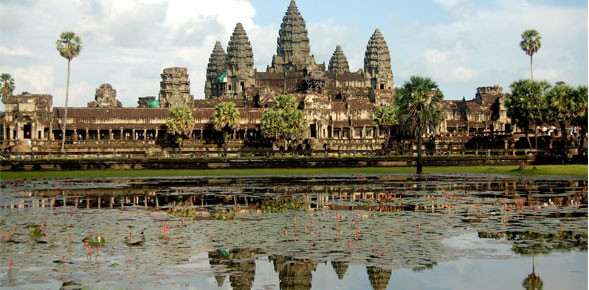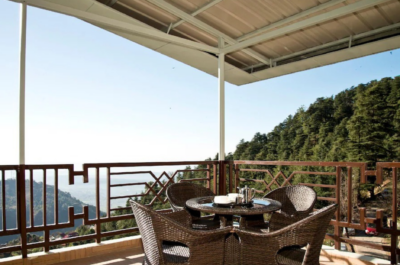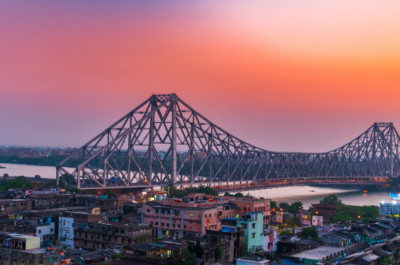As Cambodia’s most iconic monument, Angkor Wat has been the major destination for travellers to the country. However, hordes of tourists fragilize the delicate balance between the environment, temples’ preservation and the need to welcome tourists.
SIEM REAP – It is Cambodia’s largest tourism success. Angkor Wat beautiful structures, a testimony of Khmer’s artistic skills and sense of architecture graved for ever into the stone, are a magnet for world tourism. According to the Apsara Authority –which runs the temples’ complex near Siem Reap- 1.15 million people visited Angkor Wat in 2010, 1.5 million last year. And more are due to walk around the historical area iN 2012 as numbers could reach 1.8 to 1.9 million.
Officials indicate that 640,000 foreign tourists saw Angkor in the first three months of this year – a 45% rise over the same period of 2011. With the rise in tourism, temples are increasingly threaten by undisciplined behaviours from travellers, despite signage and explanation provided by authorities.
The task is daunting: garbage along the paths, climbing in non-authorized areas –including on some temples’ facades- already forced authorities to act tough. They now restrict the visit of some of the monuments and monitor ways tourists are going around. For the last two years, the number of people allowed up Phnom Bakheng to watch sunset is restricted, while the upper levels of Angkor Wat are closed to tourists and wooden staircases cover up much of the soft sandstone to protect it from erosion caused by millions of shoes.
But more needs obviously to be done. Apsara Authority on Wednesday signed a memorandum of understanding (MoU) with three Japanese companies to conduct a feasibility study to solve various environmental problems in the Angkor area.
The MoU was signed between Bun Narith, director general of Apsara Authority, Shoichi Kobayashi, chairman of the Japan Development Institute, Yasumasa Isetani, director of the JGC Corporation, and Makoto Nagao, director of the MAEDA Corporation. It was witnessed by Cham Prasidh, Cambodia’s minister of commerce, and Japan’s Minister of Economy, Trade and Industry, Yukio Edano.
The MoU is aimed at solving various environmental problems in the Angkor area through the introduction of state-of-the-art technology and building on its eco-friendly heritage model to include a possible emissions-free zone, according to a statement released on the signing.
Talking to the Phnom Penh Post , Bun Narith told that the MoU will help the Cambodia’s ancient heritage minimise the environmental impact on the area of Angkor. “It promotes the development of the Angkor complex, the Apsara Authority is co-operating with three Japanese company to conduct the study on what the project calls ‘Smart Community to protect our ancient heritage’,” he explained, adding that the project starts with the signing of the MoU and plans to be finished next February, under the financial support from Japan’s finance ministry.
The study will focus on the feasibility of an electric vehicle transportation system, photovoltaic, energy management system, water recycle system and mega solar system for the area.
Cambodia so far has failed to diversify its tourism by attracting travellers to other areas despite ongoing promotions for new eco-areas such as Rattanakiri or Kratie in the Northeast and East of the country or by promoting coastal tourism. Visitors’ growth at Angkor exceeds largely growth in other areas due also to an oversupply of accommodation in Siem Reap, which makes the destination easy to stay.
Cambodia now stays at a crucial point. Not only are the temples threatened but also the city of Siem Reap. Its old architecture has been mostly turned down and replaced by cheap unaesthetic buildings made in China –Cambodia’s number 1 supplier in construction materials as well as infrastructure projects-. They are also problems of electricity supply or clogged rivers due to the overpopulation of the area… UNESCO warned long time ago that Cambodia should be prepared to face massive flows of visitors to iconic Angkor Wat. The situation seems more serious than ever now and the government will have to stick to a strict control of the area to be sure that the temples will be visible for future generations.
Luc Citrinot a French national is a freelance journalist and consultant in tourism and air transport with over 20 years experience. Based in Paris and Bangkok, he works for various travel and air transport trade publications in Europe and Asia.













































































